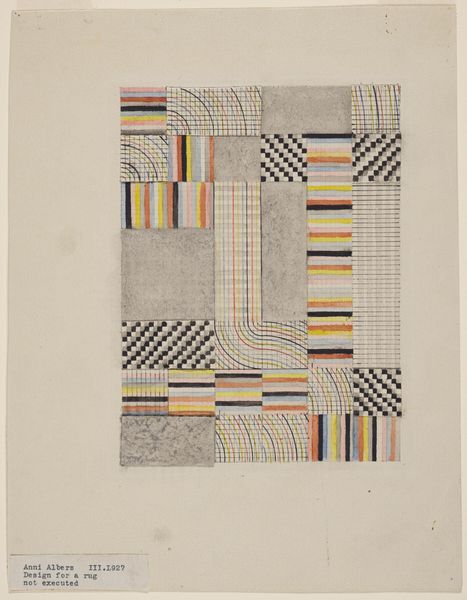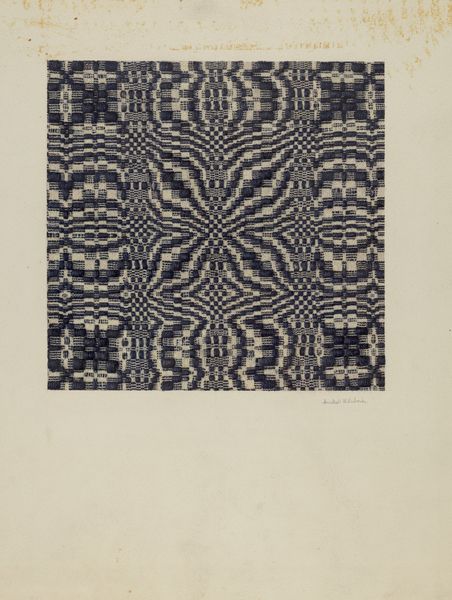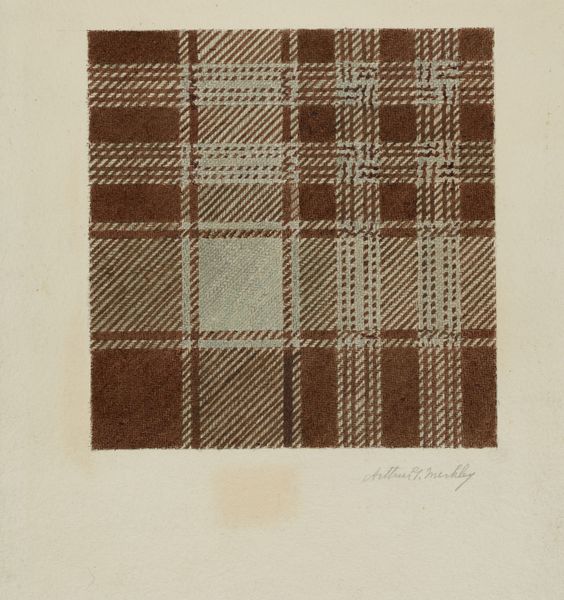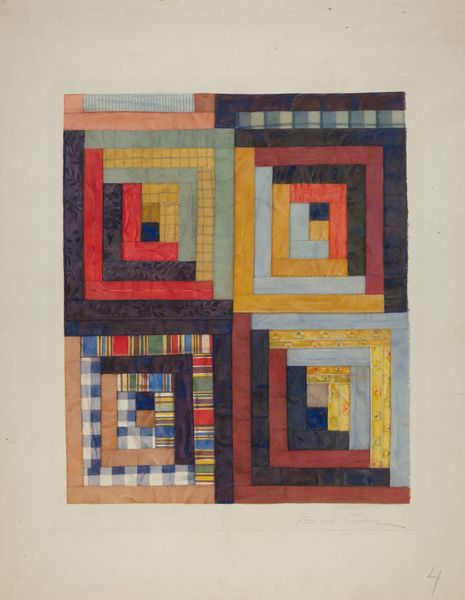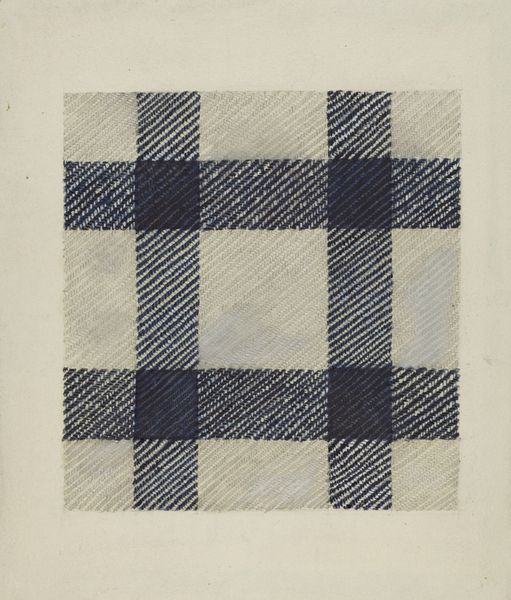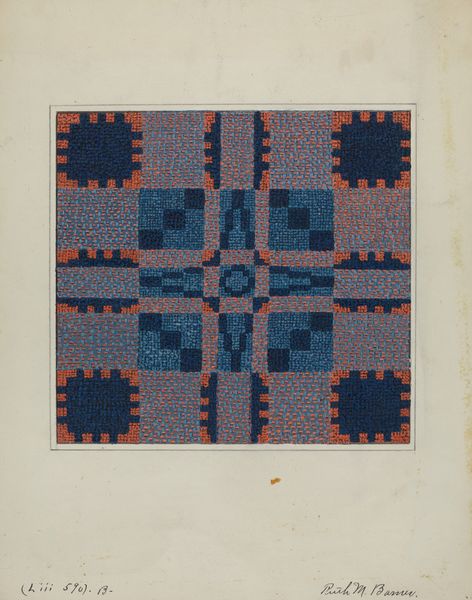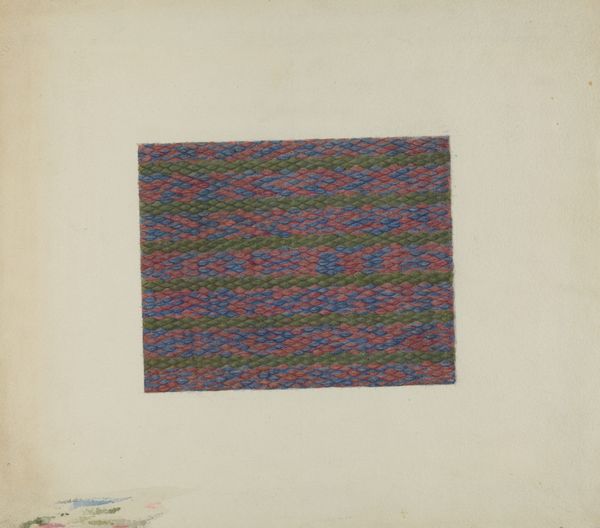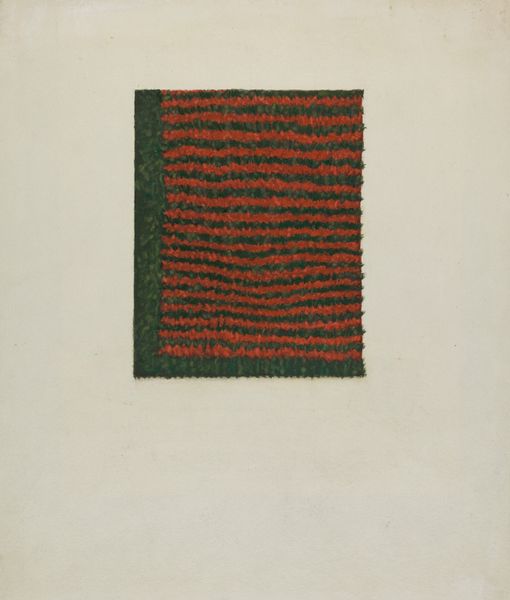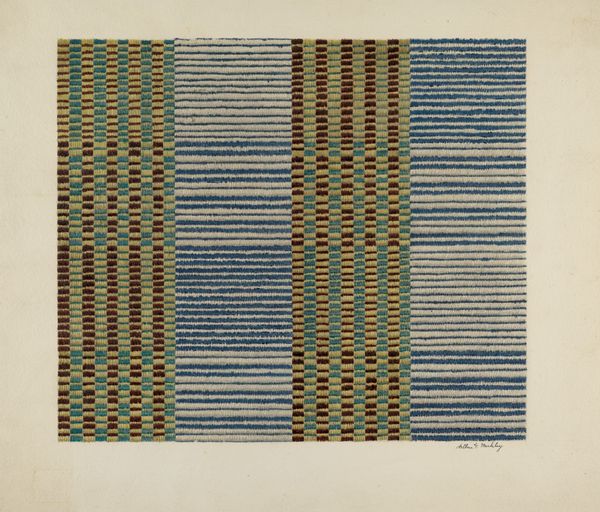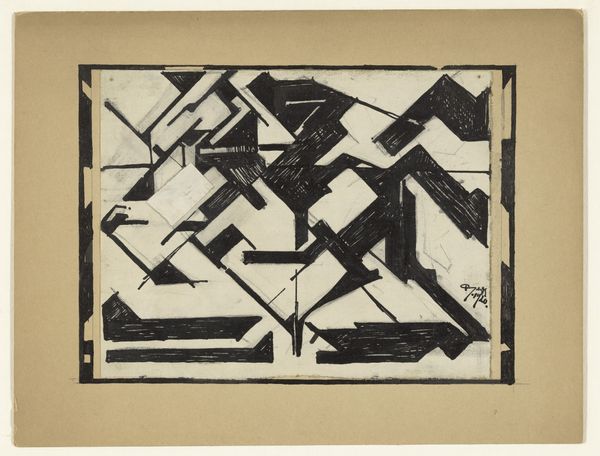
drawing, paper
#
drawing
#
paper
#
geometric
Dimensions: overall: 48.1 x 35.8 cm (18 15/16 x 14 1/8 in.)
Copyright: National Gallery of Art: CC0 1.0
Curator: This work by Harry Jennings, created sometime between 1935 and 1942, is called "Coverlet." It appears to be a drawing on paper, a study for a textile. What are your initial thoughts? Editor: It strikes me as quite meditative. The blues are calm, but that one disrupted, almost wave-like pattern… It pulls me in, makes me think about the act of disruption within established systems. It's subtle but powerful. Curator: Indeed. That disruption is fascinating. Consider the historical context—the Great Depression. The geometric, patterned abstraction feels very modern, but the medium and implied function hark back to traditional craft, perhaps a desire for comfort in a time of immense uncertainty. Editor: That resonates. It's about survival, resilience, maybe even protest. Creating beauty, a practical object, while subtly challenging conventional forms – this artwork uses what's on hand to point to change and possibility, reflecting a need for both refuge and transformation during times of social turmoil. Curator: Exactly. We can also think about the symbolism inherent in textiles themselves. Historically, and cross-culturally, they’re about protection, storytelling, connection. Jennings seems to play with this by presenting a drawing *of* a textile. It feels like a layer of abstraction meant to make us question the very function of symbols and their translation across mediums. Editor: Yes! And who has traditionally been the keeper of textiles, the maker of quilts and coverlets? Women, often marginalized voices, creating community and identity through pattern. While we don’t know Jennings’s own identity, the choice of subject can still provoke a conversation about art, labor, and cultural production being profoundly gendered, even if subtly. Curator: I agree. This seemingly simple study opens up into a wider contemplation on the nature of comfort, security, the roles of art and craft during times of duress, and the persistence of cultural memory through the most mundane and beautiful of objects. Editor: Ultimately, what I take away is how a simple set of colors and geometric shapes can offer a rich historical text when examined through a lens of human struggle, resilience, and collective creativity. It turns what seems to be a quiet artwork into an urgent conversation.
Comments
No comments
Be the first to comment and join the conversation on the ultimate creative platform.
